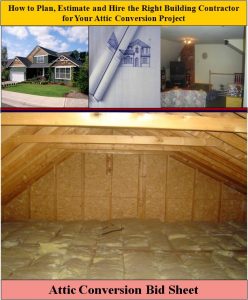Unchecked Roof Ice Dams Can Wreak Havoc to Your Home
By Mark J. Donovan
|
|
If you own a home in an area of the country where you get cold and snowy winters, then you’ve probably already experienced ice dams. If on the other hand you are a first time homeowner or a new transplant who has just purchased a home in a region of the country with harsh winters, then you may be unfamiliar with ice dams. If you fall into one of these two latter types of homeowner categories, then it’s important that you become familiar with ice dams and know how to resolve them quickly.
Ice dams form along roof edges when snow melts on the roof. Ice dams can cause major damage to the home, including water damage and structural damage. Ice dams can also cause mold and mildew growth. |
Ice dams are caused by warm moist air from the main living area of the home rising into the attic and getting trapped inside it. The warm moist air heats up the underside of the roof sheathing, which in turn causes the snow to melt on the roof.
| As the snow melts, the water drips down toward the roof edges where it then refreezes. Over just a couple of days the refreezing snow melt forms the ice ridges, known as ice dams.
The ice dams prevent additional snow melt to drip off the roof, and as a result cause the ice dams to grow in size. And that’s just the beginning of the problems. As the water backs up underneath the roof shingles it inevitably works its way into cracks in the roof sheathing, where then it begins to drip into the attic. |
 |
From there, drywall ceilings become soaked and damaged, and mold and mildew growth begin to form in the attic. However, the water damage doesn’t stop in the attic. Often the water finds its way further down into the home, and sometimes between wall paint and drywall causing large water bubbles to form that eventually burst. Also, when the temperatures drops the water underneath the shingles freezes up causing the shingles to buckle and become potentially permanently damaged.
Next place an ice melt sock every four to six feet along the roof edge, on top of the ice dam ridges, making sure to place them perpendicular to the roof edge. In just a few hours they will begin to melt channels into the ice dam ridges so that additional roof snow melt can drain off the roof. See my video on how to make ice melt socks.
When the warm weather returns resolve your attic’s insulation and ventilation shortcomings to prevent ice dams from forming the following winter.
For help on Attic Conversion and Attic Renovation Projects, see HomeAdditionPlus.com’s Attic Conversion Bid Sheet. The Attic Conversion Bid sheet will help to ensure that you hire the right contractor so that your attic conversion project is built correctly, on time and budget.
Related Information
Additional Attic Conversion and Home Remodeling Design Resources
 |
 |
Free Home Addition / Attic Conversion Price Quotes with No Obligation!
Fill out our 3-5 minute quick and easy form, and receive a free price quote on a attic conversion from one of our pre-screened and licensed home remodeling contractors. This process is free and there is no obligation to continue once you receive your attic conversion price estimate.

